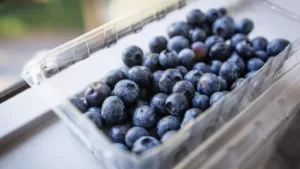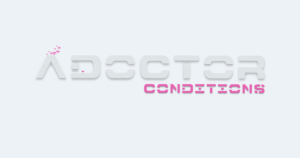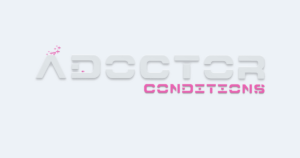What is Hypertensive Retinopathy?
Hypertensive retinopathy (HR) is a possible complication of high blood pressure (hypertension). Persistent, untreated high blood pressure can cause damage to the retina, the tissues at the back of the eye responsible for receiving the images we need to see.
The condition can lead to symptoms including double or dim vision, loss of vision, and headaches. Treating hypertensive retinopathy typically involves controlling high blood pressure through lifestyle changes, medication, and careful monitoring. Through this, the condition can be halted, and the damage may slowly heal.
People experiencing possible symptoms of hypertensive retinopathy can use Adoctor conditions and symptoms to carry out a symptom assessment.
Causes of hypertensive retinopathy
Hypertensive retinopathy is an eyesight disorder that occurs as a result of high blood pressure. High blood pressure, also called hypertension, occurs when the force of blood against the artery walls is too high, causing the arteries to stretch, narrow, and become damaged over time.
Hypertensive retinopathy occurs when the blood vessels supplying blood to the retina in the back of the eye become damaged. The likelihood of damage to the retina increases with the severity of high blood pressure and the length of time over which the condition is experienced.
Older people are most at risk of developing high blood pressure and are therefore also most at risk of developing hypertensive retinopathy.
Other factors that may contribute to the likelihood of developing high blood pressure include:[1]
- Being overweight
- A sedentary lifestyle
- A diet high in salt
- Stress
- A family history of high blood pressure
- Diabetes
- Moderate to high alcohol intake
Read more about High Blood Pressure »
Signs and symptoms of hypertensive retinopathy
Most people will only develop symptoms of hypertensive retinopathy after there has already been significant damage to the retina. Before this, it may take a doctor or ophthalmologist (specialist eye doctor) to identify the condition.
Symptoms may include:
- Double or cloudy vision
- Headaches
- Loss of vision, when the condition has progressed significantly
If these symptoms come on very quickly, this can be a sign of severely high blood pressure and should be considered a medical emergency. Call a doctor immediately.
If you think that you may be experiencing symptoms of hypertensive retinopathy, try using a List of Doctors to carry out a symptom assessment.
Hypertensive retinopathy stages
Ophthalmologists grade hypertensive retinopathy using four categories or stages. The classification system is known as the Keith Wagener Barker (KWB) grades.[1]
- Grade 1: High blood pressure and narrowing of the arteries is mild. Generally, no symptoms are present.
- Grade 2: High blood pressure and narrowing of the arteries is more pronounced. Generally no symptoms are present.
- Grade 3: Signs of damage such as retinal haemorrhage (bleeding) and cotton wool spots, i.e. white patches on the retina, are present upon inspection. Symptoms may be present.
- Grade 4: Severe Grade 3 plus swelling of the optic disc (papilledema). Symptoms are present.
Some medical professionals may prefer to use the Mitchell-Wong grading system; a simplified version of the Keith Wagener Barker grades. This system simply combines the first two categories into one.
Hypertensive retinopathy diagnosis
Diagnosing hypertensive retinopathy typically involves an examination by an ophthalmologist based on the symptoms present.
In some cases, an ophthalmoscope may be used to investigate the retina in the back of the eye. This instrument shines light into the eye, allowing doctors to see any signs of damage.
More rarely, a test known as a fluorescein angiography may be performed to investigate the blood flow into the retina. This involves taking pictures of the eye before and after a special fluorescein dye has been injected into the system and passed through the blood vessels of the eye.[1]
Hypertensive retinopathy treatment
The only way to treat hypertensive retinopathy is by controlling high blood pressure. This can be done through lifestyle changes such as:
- Giving up smoking
- Losing weight
- Taking regular exercise
- Dietary changes
- Reducing alcohol intake
Medication, such as ACE inhibitors, angiotensin-2 receptor blockers (ARBs), thiazide diuretics, calcium channel blockers, and beta-blockers may also be prescribed to help lower blood pressure levels. These medications can help to allow the retina to heal and stop further damage from occurring.
The type of medication chosen will depend on the affected person’s medical history and a consideration of the possible side effects.
Hypertensive retinopathy prevention
Preventing hypertensive retinopathy is possible through careful management of high blood pressure and related conditions, such as diabetes. Lifestyle changes, such as losing weight or giving up smoking, may be useful in achieving this. People with high blood pressure should also have their blood pressure regularly tested and be screened for eye problems.
Hypertensive retinopathy complications
Individuals with hypertensive retinopathy are at risk of various complications, including:[2]
- Retinal vein occlusion occurs when a vein in the retina becomes blocked due to clots.
- Retinal artery occlusion occurs when an artery in the retina becomes blocked due to clots, resulting in possible loss of vision.
- Ischemic optic neuropathy involves the normal blood flow to the eye being blocked, resulting in damage to the optic nerve, the part of the eye which transmits images to the brain.
- Malignant hypertension causes blood pressure to increase rapidly, causing possible loss of vision. This is a rare complication, which is potentially life-threatening.
Hypertensive retinopathy is also linked to an increased risk of stroke and heart attack.
Prognosis
The outlook for people with mild (grade 1 or 2) hypertensive retinopathy is relatively positive, so long as blood pressure levels are controlled. If, however, severe hypertensive retinopathy is not properly managed, the condition can enter a “malignant” stage, which is associated with a relatively poor prognosis.[3]
Hypertensive retinopathy FAQs
u003cstrongu003eCan hypertensive retinopathy be reversed?u003c/strongu003e
It depends on the extent of damage to the retina. In many cases, the damage caused by hypertensive retinopathy can slowly heal if the necessary steps to lower one’s blood pressure are taken. These steps may include making lifestyle changes such as giving up smoking and losing weight, as well as taking medication as prescribed by a doctor.
u003cstrongu003eWhat is the difference between hypertensive retinopathy and diabetic retinopathy?u003c/strongu003e
Hypertensive retinopathy is caused by high blood pressure. While having high blood pressure can increase the risk of diabetic retinopathy, this condition is a complication of u003ca href=u0022https://adoctor.org/conditions/diabetes/u0022u003ediabetesu003c/au003e, meaning anyone with diabetes type 1 or u003ca href=u0022https://adoctor.org/conditions/diabetes-mellitus-type-2/u0022u003etype 2u003c/au003e can potentially develop the condition. Like hypertensive retinopathy, diabetic retinopathy causes damage to the retina at the back of the eye and can, if left untreated, lead to blindness.u003csupu003eu003ca href=u0022https://adoctor.org/wp-admin/post.php?post=4862u0026amp;action=edit#fn4u0022u003e[4]u003c/au003eu003c/supu003e
u003cstrongu003eCan high blood pressure cause double vision?u003c/strongu003e
Yes, double vision can, in some cases, be a symptom of high blood pressure, specifically when high blood pressure has led to hypertensive retinopathy. If this symptom occurs very suddenly, a doctor should be contacted urgently.
Other names for hypertensive retinopathy
- Fundus hypertonicus
-
Healthline. “Making Sense of Hypertensive Retinopathy.” January 6, 2016. Accessed May 11, 2018. ↩ ↩ ↩
-
Royal College of General Practitioners. “Hypertension and the eye.” Accessed May 11, 2018. ↩
-
Retinal Physician. “Current Concepts in Hypertensive Retinopathy.” November 1, 2013. Accessed May 11, 2018. ↩
-
NHS Choices. “Diabetic retinopathy.” January 26, 2016. Accessed July 31, 2018. ↩
**What is Hypertensive Retinopathy?**
**Q: What is hypertensive retinopathy?**
**A:** Hypertensive retinopathy is a condition in which high blood pressure (hypertension) damages the blood vessels in the retina, the light-sensitive tissue at the back of the eye.
**Q: What are the causes of hypertensive retinopathy?**
**A:** Hypertensive retinopathy is caused by long-term, uncontrolled high blood pressure. It can also be associated with conditions such as:
* Diabetes
* Kidney disease
* Pregnancy (preeclampsia)
**Q: What are the symptoms of hypertensive retinopathy?**
**A:** In the early stages, hypertensive retinopathy may not cause any noticeable symptoms. As it progresses, symptoms may include:
* Blurred vision
* Double vision
* Floaters and flashes of light
* Loss of peripheral vision
* Central vision loss (in severe cases)
**Q: How is hypertensive retinopathy diagnosed?**
**A:** Hypertensive retinopathy is diagnosed through a comprehensive eye exam, including:
* Visual acuity test
* Dilated fundus examination
* Retinal imaging (e.g., fundus photography)
**Q: What are the treatment options for hypertensive retinopathy?**
**A:** The primary treatment for hypertensive retinopathy is to control and lower blood pressure. This can involve:
* Lifestyle changes (e.g., diet, exercise)
* Medications (e.g., antihypertensives)
**Q: What are the potential complications of hypertensive retinopathy?**
**A:** Untreated hypertensive retinopathy can lead to severe complications, such as:
* Macular edema (swelling of the central part of the retina)
* Retinal detachment
* Stroke
* Heart attack
**Q: How can I prevent hypertensive retinopathy?**
**A:** Preventing hypertensive retinopathy involves controlling and managing blood pressure, which includes:
* Regular blood pressure monitoring
* Healthy lifestyle habits
* Regular check-ups with healthcare providers
One comment
Leave a Reply
Popular Articles








# Dr SEBAHI OPHTALMOLOGUE